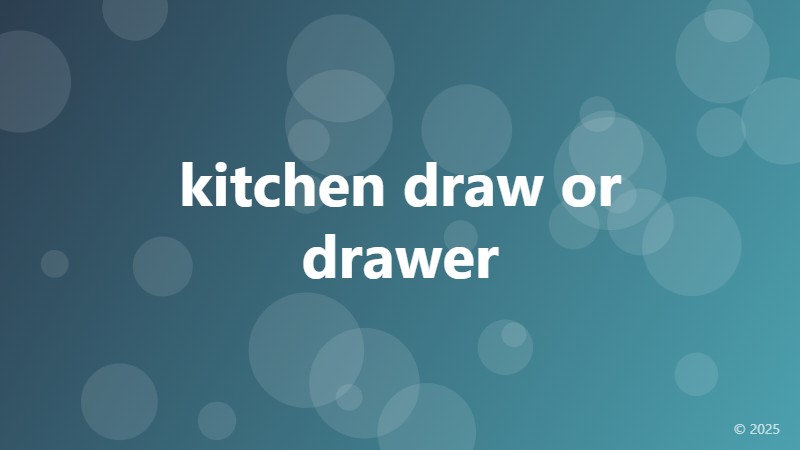kitchen draw or drawer

The Age-Old Debate: Kitchen Draw or Drawer?
When it comes to kitchen design and functionality, one question continues to spark debate among homeowners and designers alike: should it be a kitchen draw or drawer? While both terms are often used interchangeably, they have distinct meanings and implications for your kitchen's layout and workflow.
What's the Difference?
A kitchen draw typically refers to a sliding compartment or shelf that provides easy access to cookware, utensils, or other kitchen essentials. It's often a vertical or horizontal sliding mechanism that can be installed in a cabinet, island, or wall. On the other hand, a kitchen drawer is a compartment with a horizontal slide that contains storage space for kitchen items.
In essence, a draw is designed for quick access and visibility, whereas a drawer is meant for storing items out of sight. This distinction is crucial when planning your kitchen layout, as it can significantly impact your workflow and overall user experience.
Pros and Cons of Each Option
When deciding between a kitchen draw or drawer, consider the following advantages and disadvantages of each:
Kitchen Draw:
Pros:
- Easy access to frequently used items
- Space-saving design
- Visually appealing display of cookware or utensils
Cons:
- Limited storage capacity
- May not be suitable for heavy or bulky items
- Can be noisy when opening or closing
Kitchen Drawer:
Pros:
- Ample storage space for kitchen essentials
- Quiet operation
- Can be customized to fit specific needs (e.g., utensil organizers)
Cons:
- Takes up more space than a draw
- May require more effort to access items
- Less visually appealing than a draw
Ultimate Decision: Draw or Drawer?
Ultimately, the choice between a kitchen draw or drawer depends on your personal preferences, cooking habits, and kitchen layout. Consider the following:
If you value easy access to frequently used items and want to showcase your cookware or utensils, a kitchen draw might be the better choice. However, if you prioritize ample storage space and a clutter-free kitchen, a kitchen drawer could be the way to go.
By understanding the differences between a kitchen draw and drawer, you can make an informed decision that enhances your kitchen's functionality and overall user experience.